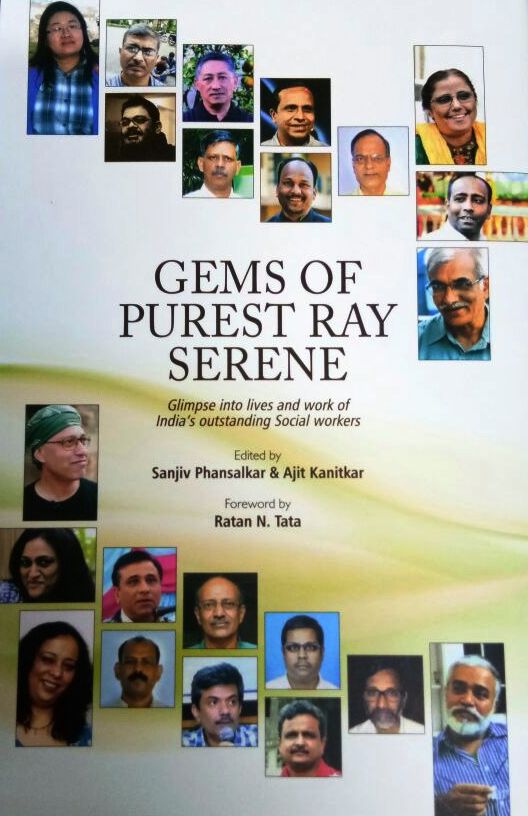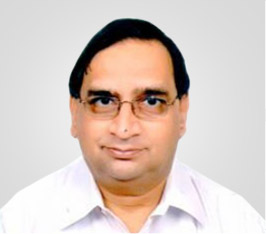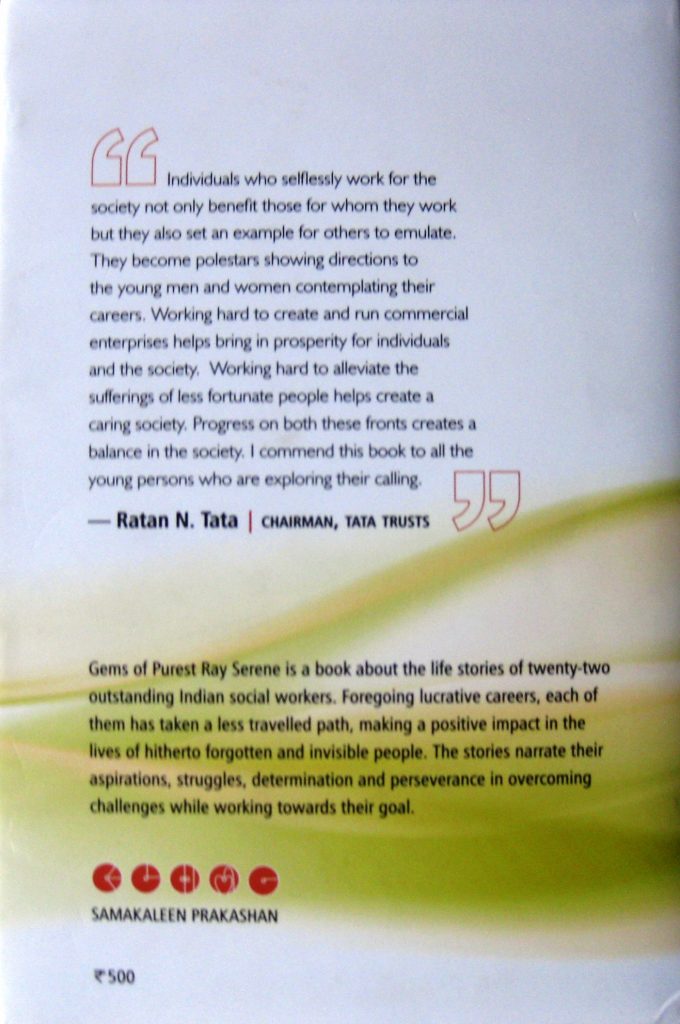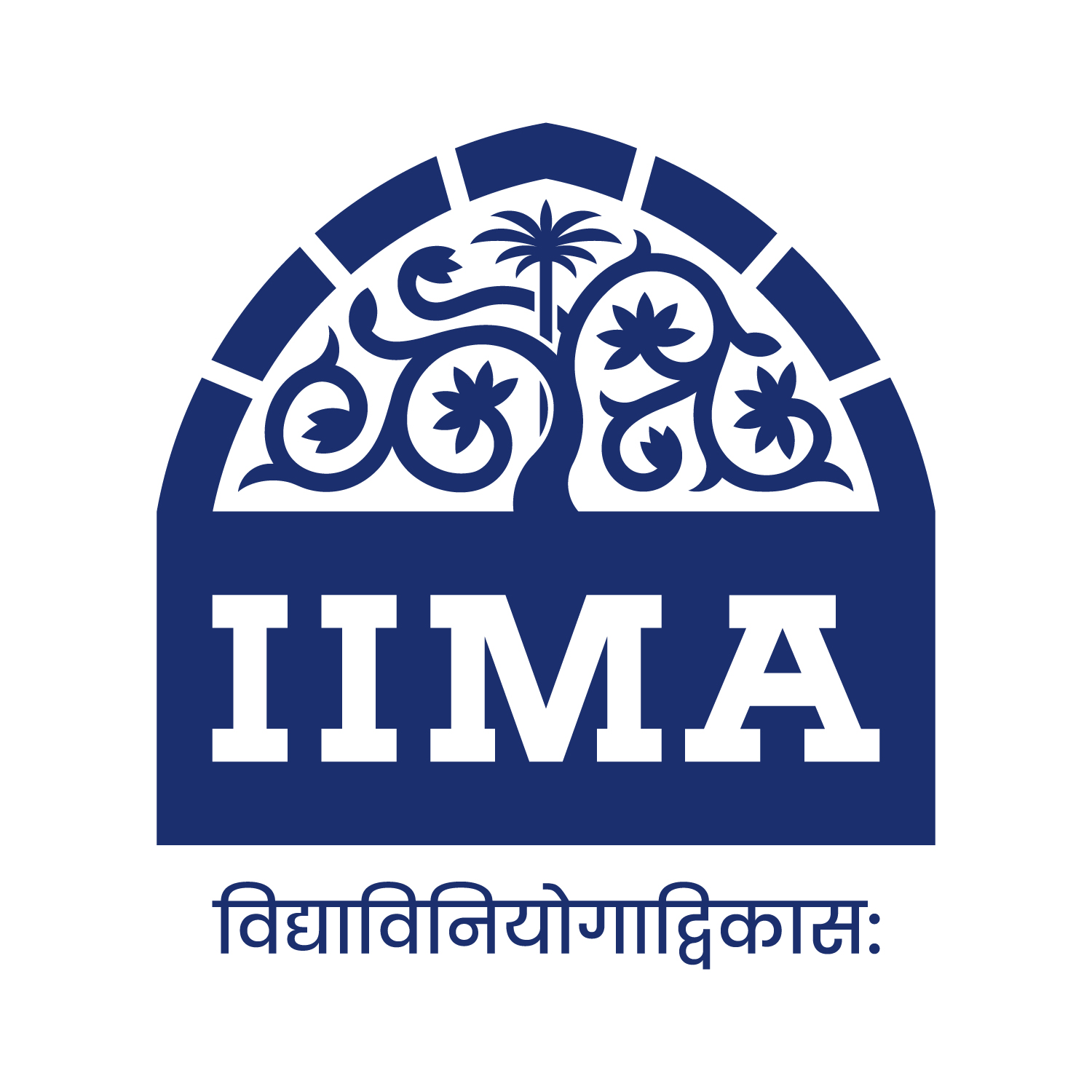Gems Of Purest Ray Serene

Edited by Sanjiv Phansalkar (PGP 1979; FPM-PSG, 1989) and Dr. Ajit Kanitkar
Reviewed by Astad Pastakia (PGP-SPA 1980; FPM-PSG, 1996)
 I recently had the opportunity to catch up with Sanjiv, who after almost a decade with the Tata Trusts, as Programme Director, has embarked on a new venture. VikasAnvesh Foundation based in Pune is an organization focused on doing serious research on the social sector, with financial support from the Tata Trusts and Sanjiv as its head. The book under review is among the first to be published out of this stable. It brings out the stories of 22 change agents drawn from different parts of the country, working on some of the most challenging social issues of our times.
I recently had the opportunity to catch up with Sanjiv, who after almost a decade with the Tata Trusts, as Programme Director, has embarked on a new venture. VikasAnvesh Foundation based in Pune is an organization focused on doing serious research on the social sector, with financial support from the Tata Trusts and Sanjiv as its head. The book under review is among the first to be published out of this stable. It brings out the stories of 22 change agents drawn from different parts of the country, working on some of the most challenging social issues of our times.
In his foreword dated December 2017, Ratan Tata, Chairman, Tata Trusts, alludes to a model of society which is as caring as it is commercially progressive: “Working hard to create and run commercial enterprises helps bring in prosperity for individuals and the society. Working hard to alleviate the sufferings of less fortunate people helps create a caring society. Progress on both these fronts creates a balance in society.”
Some of us who were fortunate enough to be on campus during the late seventies and early eighties, had the privilege of interacting with and getting inspired by Prof. Ravi J. Matthai, IIMA’s first full time director. Those were the years when he was fully involved in the “Jawaja experiment” to demonstrate that management education could be applied equally to tackle developmental goals of the nation. Profs. Neharika Vohra and Errol D’souza (18th May, 2018)[1] pointed out in a recent blog that many of the Institute’s initiatives starting with the Jawaja experiment, right down to the Bharat Inclusion Fund (BIF) being planned by the CIIE in collaboration with various trusts, are consistent with the institute’s broad goal of “Vidyaviniyogadvikasah” (development through the application of knowledge). The BIF is focused on supporting “inclusion focused entrepreneurship” also referred to as social entrepreneurship (SE). SE occupies a middle ground in the continuum of philanthropy/charity on one end of the spectrum and commercial enterprise on the other. The tools of management can be applied across the continuum.
The volume under review focuses on social workers in the conventional philanthropy mode. It addresses issues such as social exploitation on the basis of caste, class, gender, vulnerability of mentally and physically challenged citizens and children; exploitation of migrant and other workers; poverty and lack of access to basic amenities and education; and lack of sustainable livelihoods. In addressing these issues social animators found themselves taking to rights based activism on one hand and building human and social capital of the targeted populations on the other. A rough profiling of the social animators showed that 5 out of the 22 or almost one out of five were from the target communities themselves. This is an interesting finding in itself. Do we have the mechanisms to spot and support such social animators? The educational background of the rest showed that about 30% were from a management background. The rest were from science and technology (30%), arts (23.5%) and social studies (17.5%).
Of special interest is the case of one of our alumni, Pramod Kulkarni PGP (1981) who founded Society for Assistance to Children in Difficult Situation (SATHI) in 1997 to work on child rights issues. The NGO has been working on repatriation and home placement of children who had run away from homes and were found on railway platforms. Collaborating with 35 other NGOs across the country, it has successfully rescued over 50,000 children and reunited them with their families. Promod asserts that the idea of home placement when he first proposed it, was against the espoused theory of child rights and protection and hence many were opposed to it. However, data over the years has vindicated his stand. The data showed that children reunited with their families have stayed back at home in 80% cases.
Pramod acknowledges that “it was at IIMA that I realized that it is possible to work in the development sector. I knew I must work for the poor, be in direct contact with them through voluntary organizations.” Regarding the commitment to the social sector and his work he states “Once you witness the joy of a family who is united with the child, the happiness is so immense that you want to do more!” Similar sentiments are voiced by many of the other social animators who figure in this book. Each story is unique and serves as a polestar to inspire other budding social workers/animators.
A word about the case writers is in order. The cases were researched and documented by a team of sixteen authors including the two editors. These were mainly employees of the Tata Trusts at that time. The cases published in the book are only abridged versions. The original cases are still undergoing a process of rigorous analysis the findings of which would be available soon.




Sorry, the comment form is closed at this time.